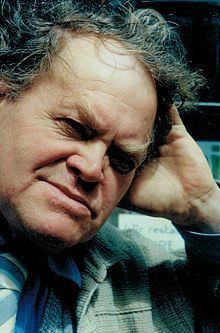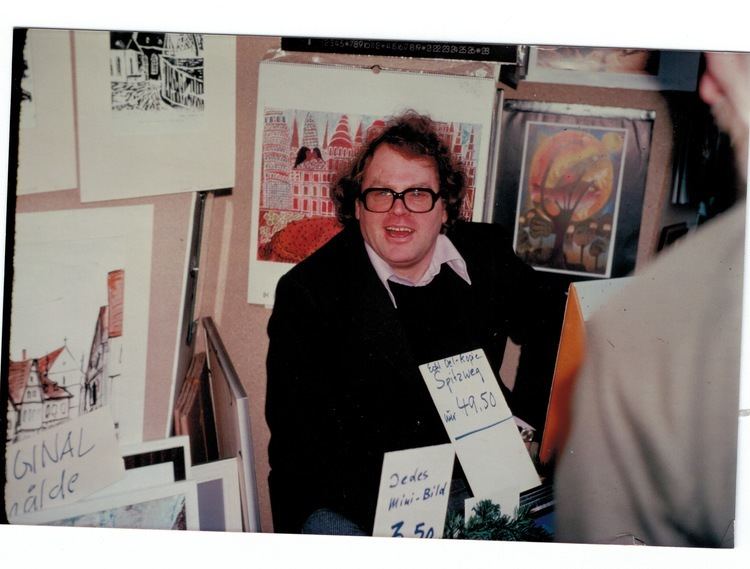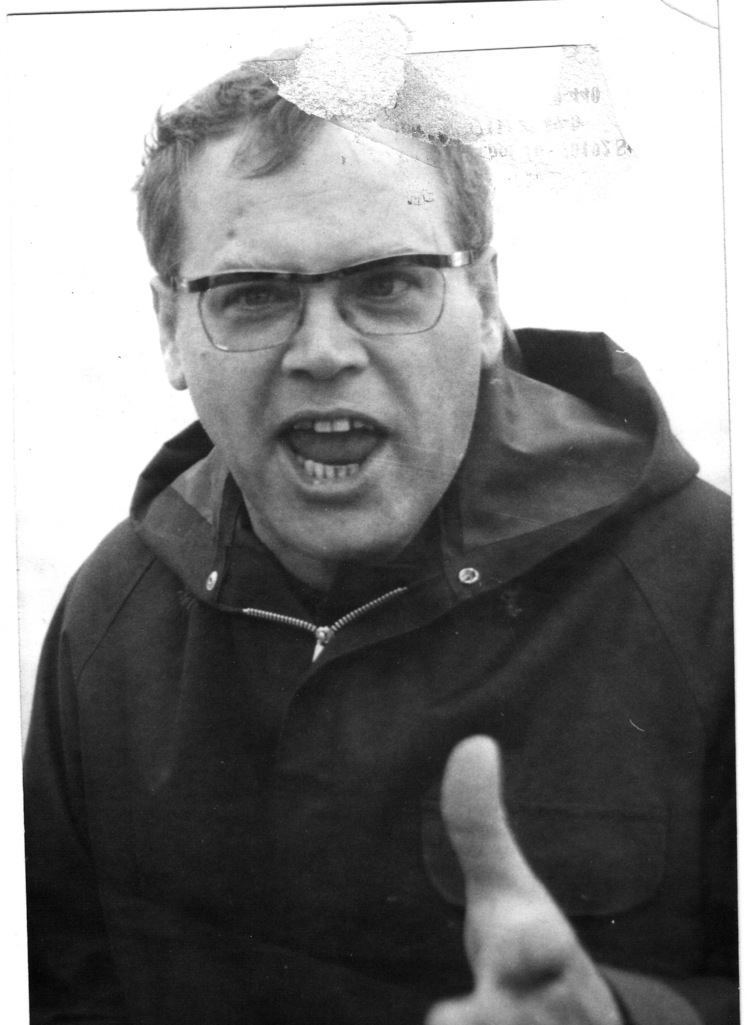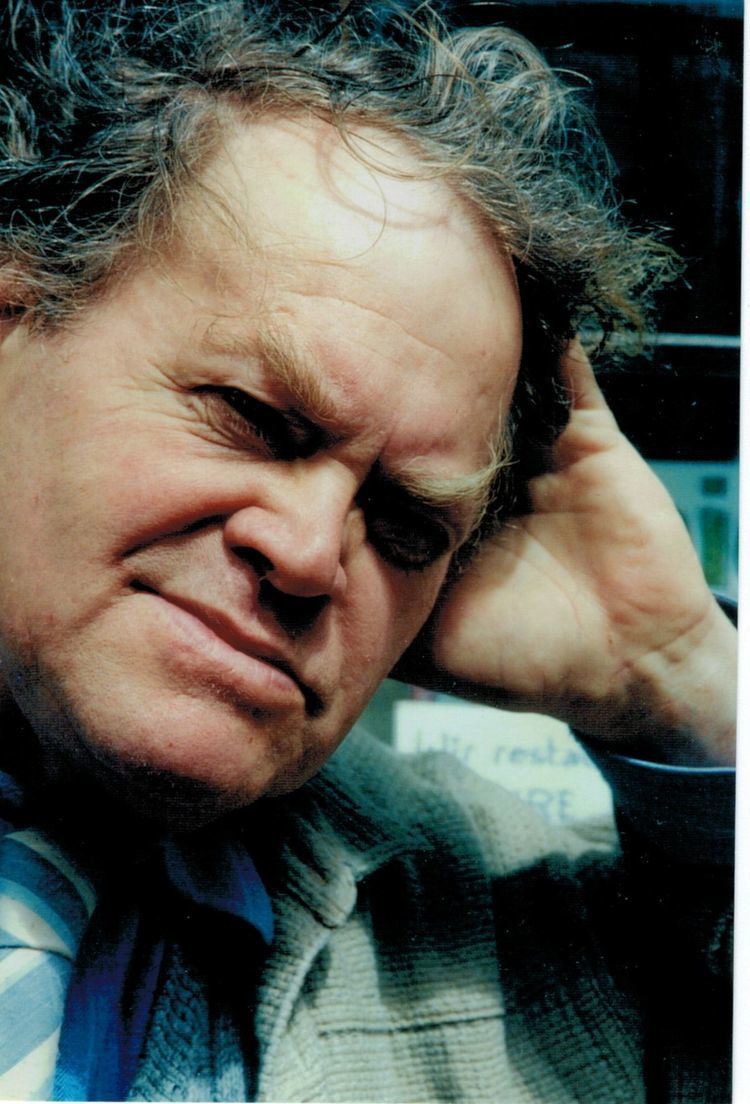Name Willy Wiedmann | ||
 | ||
Wilhelm Richard Heinrich "Willy" Wiedmann (14 March 1929 in Ettlingen, Germany – 21 June 2013 in Bad Cannstatt, Stuttgart) was a German painter, muralist, sculptor, musician, composer, writer, author, publisher, and art dealer.
Contents
- The Artist
- The Musician and Composer
- The Painter and Art Dealer
- The Author and Publisher
- Pseudonyms
- Personal life
- Functions
- Wiedmann in Numbers
- Works in Public Spaces
- 1964 1967
- 1970 1976
- 1980 1989
- 1992 1999
- 2005 2007
- Literature
- References

The Artist

Wilhelm "Willy" Wiedmann worked in many art directions, he created compositions, poems, paintings, etc., and invented his own painting style: the Polycon painting. Wiedmann also attended and organised national and international exhibitions. Throughout his career Wiedmann engaged with several famous artists such as Pablo Picasso, Georges Braque, and Salvador Dalí. He was Stuttgart's first art-dealer who displayed Dalí's art in his own gallery, "Galerie am Jakobsbrunnen." Willy Wiedmann received the Order of Merit of the Federal Republic of Germany in 2002 for his work in the service of art and culture.
The Musician and Composer

At the age of four Willy Wiedmann played the accordion; one year later, the violin and flute. In 1939 he had first appearance at a chamber orchestra. At thirteen Wiedmann wrote his first minuet; one of many composition. Throughout his life he created 150 Opus works. Wiedmann studied music between 1950–1958 at the State University of Music and Performing Arts Stuttgart, as a student of Johann Nepomuk David. From 1954–1964 he worked as a freelancer musician and composer at the Württembergischen Staatstheater Stuttgart, and between 1964–1982 for several German television and radio stations such as SDR, SWF, ARD, and ZDF. For over ten years, Wiedmann played as a professional jazz musician. Collaborating on-stage with many artists including Louis Armstrong, Ella Fitzgerald, Stan Getz, Lionel Hampton and Oscar Peterson.
The Painter and Art-Dealer
In addition to his musical career, Willy Wiedmann studied painting at the State Academy of Art and Design in Stuttgart (1960–1963); attending classes of Professor Willi Baumeister. After his studies, he invented the art of "Polycon painting" (Polykonmalerei) which he officially exhibited for the first time in 1965 at the "Galerie am Jakobsbrunnen" in Bad Cannstatt, Stuttgart. Throughout his career Wiedmann created over 30,000 paintings, which were presented in galleries worldwide.
Between 1975 and 1998 Wiedmann redesigned artwork in churches in Germany, Italy, Austria, etc. Examples include the Martinskirche in Wildberg – "Martinsfenster" in 1982, in cooperation with Volker Saile and Laleh Bastian, and the Pauluskirche in Zuffenhausen, Stuttgart in 1984.
The convergence between art and church gave Wiedmann the idea for his main work: "The Wiedmann Bible". He worked for sixteen years (1984–2000), painting the 3,333 pictures, folded into an accordion-pleat style book (leporello). Wiedmann claimed that The Wiedmann Bible is the world's longest painted Christian Bible. It is painted in Wiedmann's own Polycon style.
In 1964, Wiedmann opened his first art gallery "Galerie am Jakobsbrunnen" in Bad Cannstatt, Stuttgart. He exhibited as one of the first art-dealers of "Wiener Schule" and Neoclassicism, Salvador Dalí at his "Galerie am Jakobsbrunnen" in Stuttgart (1966), as well as Nkoane Harry Moyaga during the restrictive period of South African apartheid (1977). He was the first art dealer in Europe to exhibit the works of a black South African painter throughout this time. Wiedmann ran a total of six national and international galleries throughout his career among others the "Galerie am Jakobsbrunnen" in Stuttgart (1964–1985, director), Pictures for Business in New York (1967–1977), TWS-Etagengalerie in Stuttgart (1972–1977, director), and Kunsthoefle in Bad Cannstatt, Stuttgart (1983–1985, director).
The Author and Publisher
Despite his profession as a painter, art-dealer, musician, and composer Wiedmann also pursued his passion for writing. He wrote seven books (author or illustrator), of which he published most of them himself. Other literary works include 500 poems, lyrics, and audio plays. Wiedmann often wrote using several pen-names. An example of which is "Alkibiades Zickle;" inspired by a favorite restaurant of his, "Zickle" in Bad Cannstatt.
Pseudonyms
Emilio Gräsli
Alkibiades Zickle
Marc Johann
Theodor Abtsfeld
George Yugone
Eugen von Engelsbogen
Allan Doe
Personal life
Wilhelm Richard Heinrich (Willy) Wiedmann was born in 1929 in Ettlingen, Karlsruhe, Germany to his parents Richard and Klara Wiedmann, née Weiss. He was married to Klara Wiedmann, née Wagner (†) and fathered three children Richard (†), Cornelia and Martin. Wiedmann was known for his two pet Schnauzers: Jakob and Jakobine, named after his "Galerie am Jakobsbrunnen". They accompanied him and his wife on their trips, tours, exhibitions and festivals. Wiedmann died in 2013 at the age of 84 Jahren in Bad Cannstatt, Stuttgart.
Functions
Wilhelm Wiedmann was involved with several associations and organizations. He donated works to charity events, was a charity auctioneer himself, and a respected art critic. Starting in 1968 he took on private students such as the German actor Walter Schultheiss or the artists Laleh Bastian and Ute Hadam. Wiedmann was also very committed to the local art scene and culture and one of the founders of "Cultur in Cannstatt" (Stuttgart) in 1988.
Wiedmann in Numbers
Works in Public Spaces
Pauluskirche and Martinskirche
Designed a notable glass window, "Martinsfenster", at Martinskirche representing Jesus anointed by a Sinful Woman at Simon's premises (Lucas 7). "Projekt Weinkeller", Mall, township Kuchen, Göppingen in cooperation with Laleh Bastian and Volker Saile. Pausluskirche Polycon painting.
